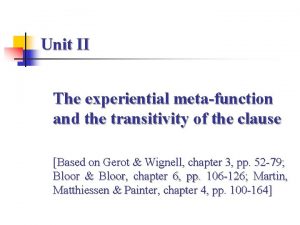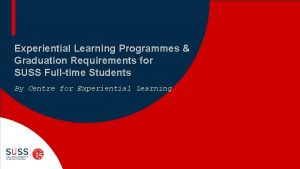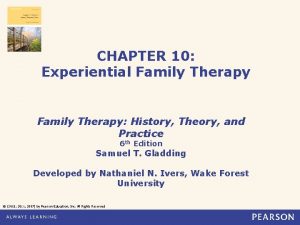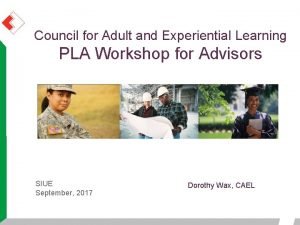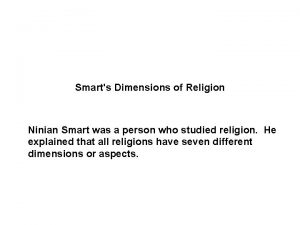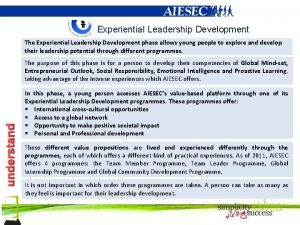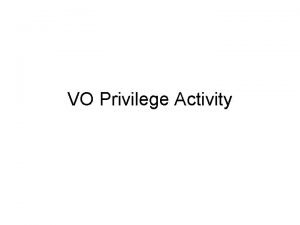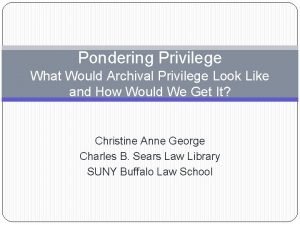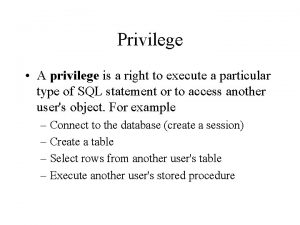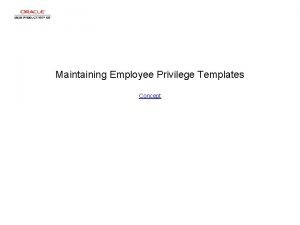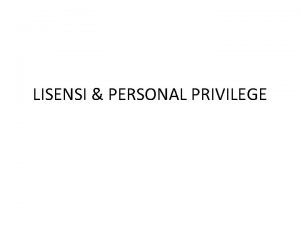An Experiential Approach to Recognizing Privilege Presenter Denise







- Slides: 7

An Experiential Approach to Recognizing Privilege Presenter: Denise Farrelly, Ed. D. Assistant Professor Kingsborough Community College Field Site Coordinator Kingsborough Community College Denise. Farrelly@kbcc. cuny. edu Co-Presenter: Daniel Kaplin, Ph. D. Adjunct Assistant Professor The College of Staten Island Past President NYSPA’s Division of Culture, Race, and Ethnicity (DCRE) Daniel. kaplin@csi. cuny. edu

A Simulated Privilege Activity Sociocultural Contexts: Social Foundations of Education (Introductory course for Education majors) S In this simulation, students are asked to work in groups to create a poster representing their cultures. However, they are blind to the true objective of the activity. S The students are told that the creators of the most aesthetically-pleasing poster will receive an advantage on their next exam. S Each group is provided with different sets of art materials to create their poster - intentionally creates an uneven playing field.

Outcomes of the Activity S The students who received the “best” materials were generally unaware that they had an advantage. S The students who received less/poorer materials were keenly aware of the inequity. S Some students quietly protested but, being part of the minority group, were generally unheard by the dominant groups.

Post-Activity Discussion Questions S How did it feel to be a member of the dominant/minority group in the activity? S Might the disadvantaged students have achieved success in the task if they simply worked harder? S Did the dominant group earn their advantage? Is it fair to blame the dominant group? Is it fair to capitalize on the minority group’s disadvantage? S How might have you approached the activity differently if you were made aware of the inequity at the start? Next lesson: Students participate in Hays’ (2013) Culture Sketch, in which they respond to questions pertaining to their own identity across the ten cultural influences.

Culture S Culture is difficult to define S Hays (1996, 2016): all of the learned behaviors, beliefs, norms, and values that are held by a group of people and passed on from older members to newer members, at least in part to preserve the group. S Encompasses more than ethnicity – any group develops a culture

Hays (2016) ADDRESSING Framework Cultural Influences Age & generational influences Socioeconomic status (SES) Developmental disabilities Sexual Orientation Disabilities Acquired later in life Indigenous heritage Religion & spiritual orientation National origin Ethnic and racial identity Gender

References S Hays, P. A. (1996). Addressing the complexities of culture and gender in counseling. Journal of Counseling & Development, 74(4), 332– 338. doi: 10. 1002/j. 15566676. 1996. tb 01876. x S Hays, P. A. (2013). Connecting Across Cultures: The Helper's Toolkit. Thousand Oaks, CA: SAGE, pp. 15 -16. S Hays, P. A. (2016). Addressing cultural complexities in practice: Assessment, diagnosis, and therapy (3 rd edition). Washington, D. C. : American Psychological Association.
